INTERNACIONAL
Military veterans of US’ ‘toxic soup’ Uzbekistan base fighting for proper care 20 years after its shutter

At the former Soviet base-turned-CIA black site and U.S. military base in Uzbekistan, researchers knew early on danger lingered not just from the enemy but from the ground itself.
Karshi-Khanabad Air Base, known as K2, was a launchpad for U.S. operations into Afghanistan after 9/11. But for thousands of American troops who served there, it may have been a death sentence.
Matthew «Nick» Nicholls, an Army environmental technician and preventive medicine specialist, was part of an early team that assessed the environmental hazards at K2.
«It is probably the most toxic soup of chemicals that any service member has ever been exposed to,» Nicholls told Fox News Digital.
Yellowcake uranium oozed from the ground. Jet fuel and volatile chemicals from decaying Soviet rocket bunkers polluted the soil and air. Dangerous fumes hung over the base like the fog of forgotten war.
Nicholls and his team warned commanders, providing recommendations like laying down gravel to suppress toxic dust and restrictions on how long personnel could work in high-risk zones. Some precautions were taken, others weren’t.
Researchers excavated «Soviet-era jet fuel that was pure enough to put into an engine and work» at K2 base. (Obtained by Fox News Digital via Matthew Nicholls)
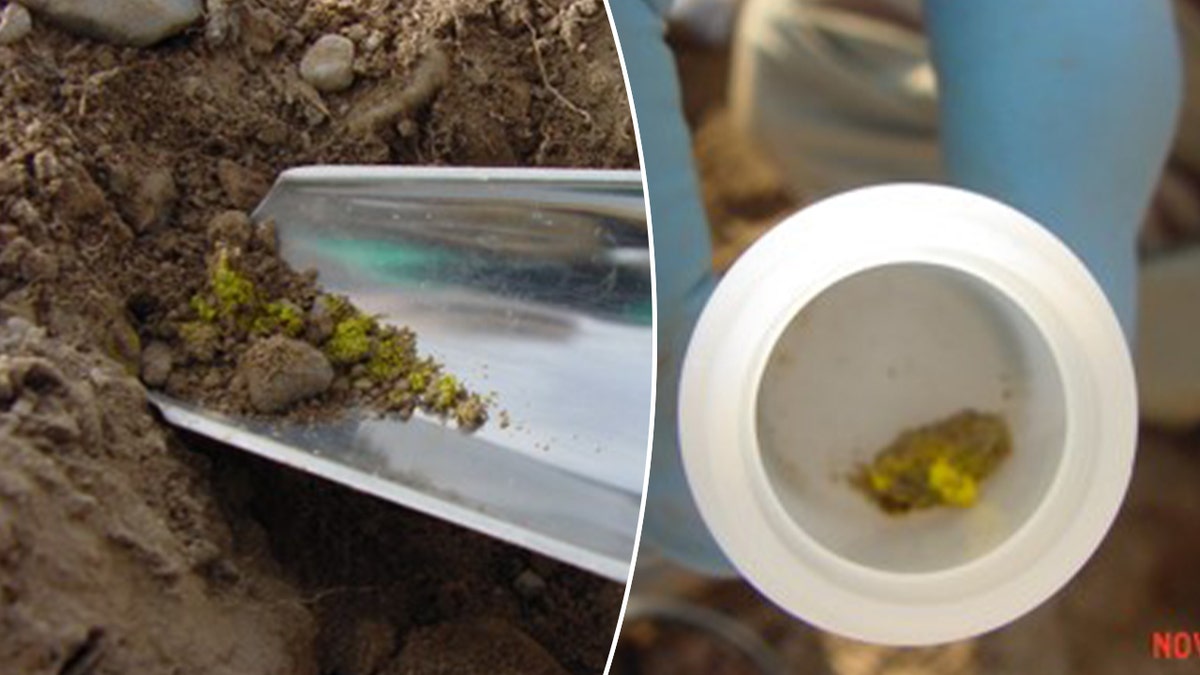
Images show visible «yellowcake» found in the ground at the K2 base. (Obtained by Fox News Digital/Matthew Nicholls)
«People that I am friends with are actively dying from cancer right now,» Nicholls said. «These are weird ontologies that are striking down people who are very young, people in their 20s, 30s, 40s, in the prime of their life.»
K2 veterans have reported a disturbing trend of rare and aggressive cancers, reproductive organ diseases, osteoarthritis and sudden, unexplained deaths.
VICTIM SPEAKS OUT AFTER NAVY DENIES FUEL-CONTAMINATED WATER CAUSED INJURIES: ‘AFFECTED IN NEARLY EVERY WAY’
«These are not the cancers that young people normally get,» Nicholls said. «Their stories are not really able to be told. That’s the tragedy of it.»
«These people went there right after 9/11 to avenge the deaths of those who were murdered,» Nicholls said. «Yet we had this launching pad in Uzbekistan that was left in such derelict condition by the Soviets.»
Between 2001 and 2005, more than 15,000 U.S. service members passed through K2. Thousands more served as contractors. Many now find themselves struggling to get adequate medical care or recognition from the Department of Veterans Affairs (VA).
The VA recognizes such veterans «may have encountered several hazardous exposures,» and the Department of Defense conducted an initial study to look at cancer outcomes. But that study was based only on a few cases of each type of cancer and should not be viewed as «definitive evidence of an association with service at K-2,» the VA says.
But a spokesperson for Rep. Mark Green said he does not believe these studies were enough, that they did not take the full extent of contamination into account and did not appropriately inform occupants of the base of their exposure risk or account for the full range of diseases that can result from toxic exposures.
«That is why Rep. Green’s NDAA (National Defense Authorization Act) amendment calls for a new, fully rigorous epidemiological study to cover these blind spots,» the spokesperson said. «There are too many unknowns to call it a case closed.»
Fox News Digital has reached out to the VA for comment.
Green, R-Tenn., and Rep. Stephen Lynch, D-Mass., introduced a provision in the 2021 National Defense Authorization Act requiring the Pentagon to complete a study on K2 exposure within 180 days. Four years later, that study remains unfinished.
«This is unjust,» Green told Fox News Digital. «There were repeated warnings that service members were being exposed to toxins, and yet their health and safety were ignored by Pentagon leadership of that day.»
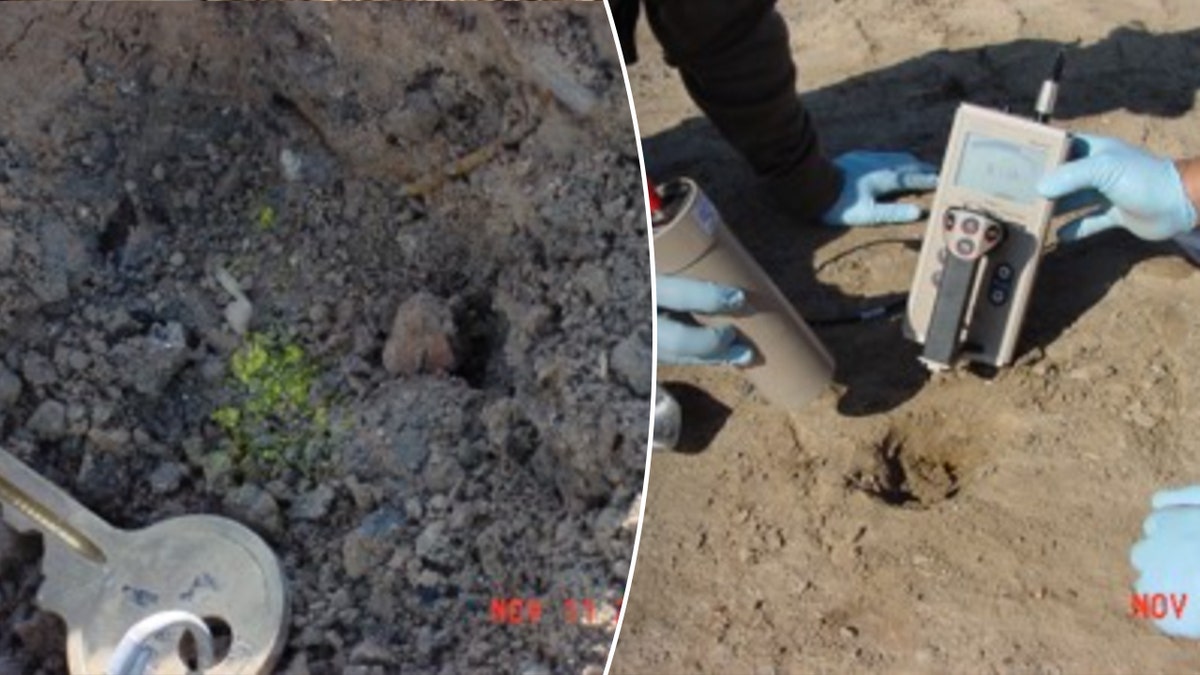
Researchers test radioactivity at K2. (Obtained by Fox News Digital/Matthew Nicholls)
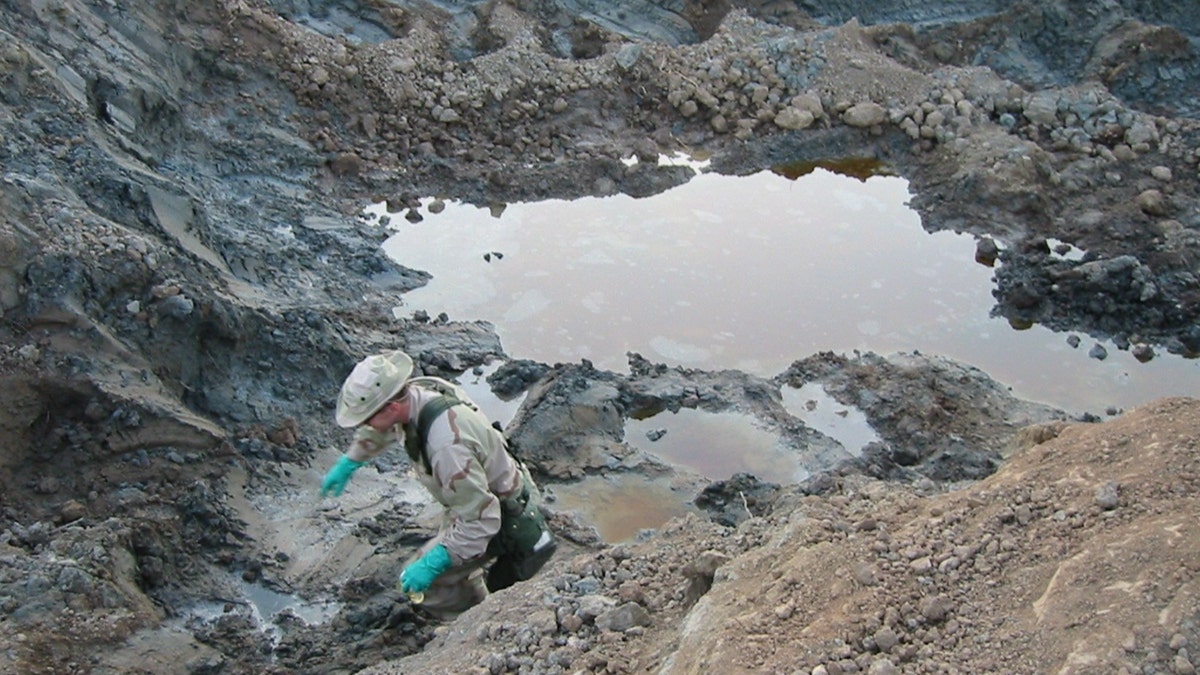
A researcher explores substances in an excavation pit at K2. (Matthew Nicholls/Obtained by Fox News Digital)
In a letter first obtained by Fox News Digital that went out late Friday, Green is pressing the Pentagon to complete the long-overdue study, a step he argues is essential to ensure K2 veterans receive the care they deserve.
«Because this study has yet to be completed (as far as Congress is aware), many K2 veterans are still waiting to receive much needed care,» he wrote. «This is unjust. There were repeated warnings at Camp Stronghold Freedom that servicemembers (sic) were being exposed to toxins, and yet their health and safety were ignored by the Pentagon leadership of that day.»
The Pentagon told Fox News Digital it would respond to Green privately.
‘LIKE A CAR CRASH’: NAVY FIGHTER PILOT DESCRIBES BRAIN INJURY PHENOMENON NOW AT CENTER OF CONGRESSIONAL PROBE
In 2024, the VA moved to expand access to disability for K2 veterans and lower the burden of proof for the veterans to link their illnesses to their service. But advocates say it wasn’t enough.
«The VA is dragging its feet,» Green said. «I think it really purely comes down to cost. I get that the VA wants to be judicious, but my God, the numbers here are so convincing. This is long past due.»
Green has also introduced new legislation requiring the VA to formally recognize links between K2 toxic exposure and diseases like cancer, ensuring affected veterans qualify for care and benefits.
Toxins at K2 included petrochemicals, volatile organic compounds, depleted uranium, burn pits and tetrachlorethylene, all chemicals associated with long-term health risks.
But K2 veterans are not specifically named in the PACT Act, which expanded coverage for other toxic exposures like Agent Orange and burn pits.
Green, a physician and Army veteran, sees disturbing echoes of past delays.
CLICK TO GET THE FOX NEWS APP
«Bureaucrats come and go, and bureaucrats have their own agendas,» he said. «I want to make sure that it’s written in stone and that these guys are not forgotten.»
Veterans,Middle East,Wars
INTERNACIONAL
As Musk exits DOGE, a look back at previous efforts to cut waste, fraud and abuse – and how they fared

As Elon Musk steps away from his official role at the Department of Government Efficiency (DOGE), he joins a history of presidential administrations that have attempted to streamline government—with mixed results.
While former Presidents Thomas Jefferson, Andrew Jackson and Grover Cleveland all tried to downsize the judiciary, treasury and civil service, respectively, it wasn’t until the 20th century that the federal government grew into the bureaucratic behemoth it is that has drawn true DOGE-type attention.
Though often seen as the bigger spenders, some Democrats joined Republicans in the 1990s to shrink the size of government and make it more accountable to taxpayers.
«We know big government does not have all the answers,» former President Bill Clinton said during his 1996 State of the Union.
PROJECT 2025 REMAINS NONPARTISAN, TRUE TO 1980S GOOD-GOV’T INCEPTION DESPITE WIDE OUTCRY, KEY FIGURES SAY
Presidents Ronald Reagan, Bill Clinton, Lyndon Johnson, left to right. (Getty)
«We know there’s not a program for every problem. We have worked to give the American people a smaller, less bureaucratic government in Washington — and we have to give the American people one that lives within its means.»
«The era of big government is over,» he said, in a phrase that had largely been considered the closest emulation of DOGE thought until Musk arrived on the scene.
Clinton also sought welfare reform and emphasized personal responsibility over dependency on the state.
The Arkansan also called for slashing the bureaucracy by 200,000 jobs and worked with then-House Speaker Newt Gingrich, R-Ga., to balance the federal budget.
President Donald Trump’s efforts to do the same have received a very different response from the left.
Clinton, working with congressional Republicans – while also frequently sparring with them — was able to reduce the federal workforce somewhat and establish a budget surplus but also failed to realize entitlement reform, something that more recent fiscal hawks have also struggled with.
RFK JR DOUBLES DOWN ON ALLEGATIONS THE CIA WAS INVOLVED IN JFK ASSASSINATION

JFK, left, Robert McNamara, right. McNamara went on to also lead the Pentagon under President Johnson. (Bettmann/Getty)
Clinton won his 1992 upset as a centrist, after incumbent Republican George H.W. Bush was lambasted for reneging on his «Read my lips – no new taxes» pledge, with a statistical boost from industrialist independent H. Ross Perot, who won the votes of many erstwhile Bush supporters.
Clinton and then-Vice President Al Gore established a National Performance Review (NPR) that drew some parallels to today’s DOGE, and cut the bureaucracy to 1960s levels.
He went on to win reelection over otherwise popular GOP stalwart Sen. Bob Dole, R-Kan., in 1996.
In 1980, actor-turned-California Gov. Ronald Reagan took the White House with promises similar to another celebrity-turned-politician who would do the same 36 years later.
The Gipper did not succeed in abolishing the Department of Education – created only a few years prior by former President Jimmy Carter – something Trump has also sought.
But, he reinvigorated a new generation of conservatives who still praise him for slashing income taxes, seeking to «starve the beast» via forced discretionary-spending cuts, and took on public-sector unions when he essentially won a dare against Air Traffic Controllers who went on strike by firing them all and prohibiting their rehiring.
Reagan’s closest iteration of DOGE was the 1982 Grace Commission, studying cost-cutting and efficiency – and led by Maryland chemical executive J. Peter Grace along with dozens of «commissioners» plucked from the private sector.
In the executive order creating the Grace Commission, it was tasked with examining «the entire federal government for areas of inefficiency, mismanagement and waste, and to recommend savings without raising taxes or cutting essential services.»
Within its three-year lifespan, the commission reported $424 billion in savings, including waste, fraud, abuse, overpayments to government vendors and billions in unpaid taxes.
Reagan, however, faced the same resistance from the proverbial «Swamp» in trying to implement the commission’s findings.
«We’re not trying to hurt anyone. But the American taxpayer is being ripped off,» Grace said at the time.
While ushered in as a conservative pragmatist, Reagan’s later years saw budget deficits grow, and the national debt more than double. The Dow also lost nearly one-quarter of its value on «Black Monday,» Oct. 19, 1987.
The other contemporary president known for trying to «DOGE» government was Texas Democrat Lyndon Johnson. LBJ was known for rapidly expanding government through his «Great Society» social programs but also took aim at streamlining the Pentagon and Defense apparatus.
CLICK HERE TO GET THE FOX NEWS APP
Efforts at the Pentagon largely failed, as the ongoing Vietnam War also accentuated costly balance sheets.
Defense Secretary Robert McNamara, a Kennedy holdover and former Ford Motor Company chief, was employed to make changes at the Pentagon.
He instituted what was called the Planning Programming Budgeting System, which sought to bring a more streamlined approach to managing the Pentagon’s budget.
However, the vast size of the defense bureaucracy—along with resistance from some military leaders—undermined the effectiveness of Johnson’s and McNamara’s reform efforts.
Presidential,Executive,White House,Elon Musk,Presidential Deficit,Bill Clinton
INTERNACIONAL
EN VIVO: Rusia y Ucrania reanudan las negociaciones de paz en Estambul tras la “Operación Telaraña” que tomó por sorpresa a Putin

Delegaciones de Rusia y Ucrania se reúnen este lunes en Estambul para una segunda ronda de conversaciones de paz directas, tras tres años de guerra que ha dejado decenas de miles de muertos en ambos bandos. Las negociaciones, que comenzaron poco después de las 13:00 hora local en el histórico palacio de Ciragan a orillas del Bósforo, buscan avances más sustanciales que la primera ronda del 16 de mayo, que solo logró un acuerdo para el intercambio de prisioneros a gran escala.
Las conversaciones se desarrollan en un momento de máxima tensión tras un ataque ucraniano “a gran escala” el domingo que alcanzó territorio ruso hasta Siberia, dañando decenas de aeronaves militares en cuatro bases aéreas. Ucrania reivindicó haber causado daños por 7.000 millones de dólares en el asalto coordinado con drones, mientras Rusia reportó haber derribado 162 drones ucranianos durante la noche, principalmente en las regiones fronterizas de Kursk y Bélgorod.
Las posiciones de ambas partes permanecen irreconciliables: Ucrania exige un “alto el fuego completo e incondicional” y el retorno de prisioneros y niños deportados, mientras Rusia presenta un “memorándum” con condiciones que incluyen la renuncia ucraniana a ingresar a la OTAN y la entrega de cinco regiones anexadas. El presidente ucraniano Volodimir Zelensky sigue solicitando una reunión directa con Vladimir Putin, propuesta que el Kremlin ha rechazado repetidamente.
A continuación, la cobertura minuto a minuto de la jornada de conversaciones a medida que se desarrolla:
El ataque de drones ucranianos en lo profundo de Rusia dio inicio a un nuevo paradigma militar
El uso masivo de naves baratas no tripuladas por parte de Ucrania contra bombarderos rusos plantea un nuevo escenario en la guerra que lleva a repensar inversiones en defensa y la protección de infraestructuras estratégicas
La reciente ofensiva ucraniana contra bases aéreas rusas expuso una vulnerabilidad que, según Max Boot en The Washington Post, debería inquietar a los altos mandos militares de todo el mundo. “Si los ucranianos pudieron infiltrar drones tan cerca de bases aéreas importantes en un estado policial como Rusia, ¿qué impide que los chinos hagan lo mismo con bases aéreas estadounidenses? ¿O los paquistaníes con bases aéreas indias? ¿O los norcoreanos con bases aéreas surcoreanas?”, planteó Boot.
Las fotos de las delegaciones reunidas
El Gobierno turco y las agencias de noticias publicaron fotos de las delegaciones rusa y ucraniana reunidas ahora en el palacio de Ciragan para mantener conversaciones directas.



Canciller turco: “El respaldo de EEUU extremadamente importante”

(REUTERS/Murad Sezer)
El apoyo de Estados Unidos a las conversaciones de paz entre Rusia y Ucrania es “extremadamente importante”, afirmó el lunes el máximo representante diplomático de Turquía, mientras ambas partes iniciaban una segunda ronda de negociaciones directas en Estambul.
“Consideramos que la confianza y el apoyo de Estados Unidos a estas conversaciones son extremadamente importantes. La determinación del presidente Donald Trump de establecer la paz ha abierto una nueva ventana de oportunidad”, declaró el ministro de Asuntos Exteriores, Hakan Fidan.
La advertencia de dos senadores de EEUU: “Putin se está preparando para más guerra”

Dos senadores estadounidenses de alto rango advirtieron el domingo que el presidente ruso Vladimir Putin está jugando al tiempo en las conversaciones de paz mientras prepara una nueva ofensiva militar en Ucrania, argumentando que las próximas dos semanas podrían determinar el futuro de una guerra que ya ha devastado ciudades y desplazado a millones de personas. El senador republicano Lindsey Graham y el demócrata Richard Blumenthal hablaron con The Associated Press tras reunirse con el presidente Volodimir Zelensky y recorrer barrios destruidos por lo que calificaron como los peores bombardeos rusos desde el inicio de la invasión a gran escala.
Los legisladores, que se encuentran en París para conversaciones con el presidente francés Emmanuel Macron, advirtieron que la ventana para prevenir un renovado asalto se está cerrando. Graham afirmó haber visto “evidencia creíble de una invasión de verano o principios de otoño, una nueva ofensiva de Putin”, mientras que Blumenthal acusó al líder ruso de “dilatar y obstaculizar, prolongando la conversación para poder montar esta ofensiva y tomar control de más territorio”. Los senadores dijeron que las conversaciones de paz que se reanudaron este lunes en Estambul son una táctica dilatoria, ya que Moscú aún no ha presentado una propuesta seria.
En el centro de su impulso está un proyecto de ley de sanciones bipartidista, respaldado por casi todo el Senado estadounidense pero que enfrenta perspectivas inciertas en Washington. La legislación impondría aranceles del 500% a países que continúen comprando petróleo, gas, uranio y otras exportaciones rusas, apuntando a naciones como China e India que representan aproximadamente el 70% del comercio energético de Rusia. Graham calificó la medida como “el proyecto de ley más draconiano que he visto en mi vida en el Senado”, mientras que Blumenthal la describió como “devastadora” y dijo que colocaría la economía rusa “en una isla comercial”.
Los senadores expresaron esperanzas de que sus hallazgos de primera mano ayuden a cambiar el impulso en Washington y convencer al escéptico presidente Donald Trump de respaldar las sanciones. Tras una reunión de una hora con Macron, ambos dijeron estar convencidos de que Europa está lista para endurecer su postura, con Blumenthal señalando que el presidente francés está “100% alineado” con su mensaje. Trump aún no ha respaldado el proyecto de ley de sanciones, diciéndole a reporteros el viernes: “No sé. Tendré que verlo”.
Los mercados globales, golpeados por la guerra
Los mercados financieros globales cayeron el lunes mientras los precios del petróleo se dispararon en medio de la escalada de tensiones geopolíticas por el conflicto entre Rusia y Ucrania. Las acciones asiáticas y europeas retrocedieron, con el índice Hang Seng de Hong Kong perdiendo 0.6% y el DAX alemán bajando 0.4%, mientras los futuros estadounidenses también marcaron descensos. Los precios del crudo de referencia estadounidense subieron $2.08 a $62.87 por barril y el Brent internacional ganó $1.75 a $64.53 por barril.
La volatilidad de los mercados se intensificó horas antes de que delegaciones rusas y ucranianas se reunieran para una nueva ronda de conversaciones de paz directas en Estambul. Moscú bombardeó Ucrania con misiles y drones en las horas previas a las negociaciones, mientras que un ataque ucraniano con drones destruyó más de 40 aviones rusos en territorio ruso, según informó el domingo el Servicio de Seguridad de Ucrania.
Los mercados también enfrentaron presión adicional por las crecientes tensiones comerciales entre Estados Unidos y China, con el presidente Donald Trump anunciando que duplicará los aranceles sobre acero y aluminio al 50%. La combinación de incertidumbre geopolítica por el conflicto ucraniano-ruso y las disputas comerciales alimentó la aversión al riesgo entre los inversores, llevando a una jornada de pérdidas generalizadas en las bolsas mundiales mientras los precios de las materias primas energéticas se beneficiaron de las preocupaciones sobre el suministro.
Keir Starmer advirtió que el Reino Unido debe prepararse para la guerra ante la amenaza real de Rusia
El gobierno británico anunció un ambicioso plan de defensa, con inversiones en submarinos nucleares y municiones, para responder a la creciente tensión internacional y fortalecer la seguridad nacional
El primer ministro británico, Keir Starmer, afirmó este lunes que el Reino Unido debe avanzar hacia una “preparación para la guerra” ante lo que describió como una amenaza real e inmediata por parte de Rusia. En un discurso pronunciado en Glasgow, el líder laborista sostuvo que la agresión del Kremlin representa el desafío más grave para la seguridad europea desde el final de la Guerra Fría y llamó a “cada parte de la sociedad” a asumir su responsabilidad en la defensa nacional.
El avance de Rusia en Ucrania se aceleró en primavera: datos del ISW

Mientras la segunda ronda de conversaciones está a punto de empezar en Estambul, la guerra en el terreno continúa. Este lunes, un análisis de AFP basado en datos del Instituto para el Estudio de la Guerra (ISW) mostró que las fuerzas rusas aceleraron significativamente su avance territorial en Ucrania durante la primavera de 2025, recuperando el impulso tras una desaceleración invernal. Las tropas rusas capturaron 507 kilómetros cuadrados en mayo, un aumento notable respecto a los 379 kilómetros cuadrados de abril y los 240 kilómetros cuadrados de marzo.
El avance ruso de mayo se concentró nuevamente en la región oriental de Donetsk, que representó casi 400 kilómetros cuadrados del territorio ganado, de acuerdo al centro de estudios con sede en EEUU. Las fuerzas ucranianas no lograron recuperar ningún territorio durante ese mes, continuando una tendencia que se ha mantenido durante el último año en el que Ucrania no ha conseguido retomar territorios perdidos.
Durante el período de junio de 2024 a mayo de 2025, Rusia ganó un total de 5.107 kilómetros cuadrados —menos del uno por ciento del territorio ucraniano anterior a la guerra— mientras que las fuerzas ucranianas solo recuperaron 85 kilómetros cuadrados. A finales de mayo, Rusia controlaba total o parcialmente casi el 19 por ciento del territorio ucraniano previo al conflicto, incluyendo Crimea y el Donbass.
El patrón de aceleración primaveral se repitió respecto al año anterior: en la primavera de 2024, el avance ruso también ganó velocidad, con las tropas de Moscú tomando 449 kilómetros cuadrados en mayo, tras 111 kilómetros cuadrados en abril y 50 kilómetros cuadrados en marzo de ese año.
Qué exige cada parte para alcanzar un acuerdo de paz

Las delegaciones rusa y ucraniana presentarán este lunes sus visiones sobre un posible acuerdo de paz, pero sus demandas permanecen fundamentalmente incompatibles tras tres años de guerra. Rusia exige retener todo el territorio ocupado en el sur y este de Ucrania, incluyendo las cuatro regiones anexadas en 2022 —Donetsk, Lugansk, Zaporizhzhia y Kherson— además de Crimea, ocupada en 2014. Putin demandó el año pasado que Ucrania retire sus fuerzas incluso de las partes de esas regiones que aún controla como prerrequisito para cualquier acuerdo.
En la primera ronda de mayo, según Kiev, Moscú repitió estas demandas territoriales y amenazó con acelerar una ofensiva terrestre hacia las regiones de Sumy y Kharkiv. El canciller ruso Serguéi Lavrov ha calificado el reconocimiento de la propiedad de Moscú sobre estos territorios como “imperativo” para cualquier negociación. Ucrania ha declarado que nunca reconocerá los territorios ocupados como rusos, aunque Zelensky ha sugerido que Kiev podría verse obligado a intentar recuperarlos por medios diplomáticos.
Moscú también demanda que Ucrania renuncie definitivamente a ingresar a la OTAN, limite el tamaño de su ejército y se declare un estado neutral, además de cesar el flujo de armas occidentales. Putin ha insistido en la remoción del presidente Zelensky y en marzo propuso colocar a Ucrania bajo una “administración temporal” respaldada por la ONU. Los funcionarios rusos han pedido la “desmilitarización” y “desnazificación” de Ucrania, narrativa rechazada por Kiev y Occidente.
Por su parte, Ucrania exige un “alto el fuego completo e incondicional” que cubra combates terrestres, aéreos y marítimos, seguido de la liberación de prisioneros y el retorno de niños deportados. Zelensky busca “garantías de seguridad” occidentales para prevenir futuras invasiones rusas, idealmente el ingreso a la OTAN o la protección del Artículo 5 de defensa colectiva. Con Trump descartando la membresía ucraniana en la OTAN y Putin calificándola de “inaceptable”, Kiev presiona por otros compromisos militares occidentales, incluyendo las discusiones lideradas por Reino Unido y Francia sobre un posible despliegue de tropas europeas para hacer cumplir cualquier alto el fuego.
Putin ha rechazado los llamados ucranianos y occidentales a un alto el fuego inmediato, insistiendo en que las conversaciones deben abordar las “causas profundas” del conflicto, que según Moscú incluyen agravios con Kiev y la expansión occidental hacia antiguos países soviéticos o comunistas.
Telaraña letal: el golpe de drones ucranianos que derriba la ilusión de una retaguardia segura en Rusia
La operación llevada a cabo por Kiev explotó los “puntos ciegos” inherentes a la extensa red de defensa aérea rusa. Representa, además, un hito en la evolución de la guerra con aviones no tripulados, y demuestra el creciente papel de la IA en misiones militares
Este domingo 1 de junio, Ucrania ejecutó una operación sin precedentes, denominada “Operación Telaraña”, que implicó un ataque coordinado contra múltiples bases aéreas rusas, algunas ubicadas a miles de kilómetros de la frontera ucraniana. Esta operación se distinguió por su innovadora metodología de infiltración, empleo de nuevas tecnologías, capacidad de inteligencia, comunicaciones avanzadas, inteligencia artificial aplicada, adaptación de tecnologías existentes, buen OPSEC, y mucha paciencia. Según las autoridades ucranianas, más de 40 aviones militares, incluyendo bombarderos estratégicos y aeronaves de alerta temprana, fueron afectados por la operación. El presidente ucraniano, Volodymyr Zelenskyy, declaró que se desplegaron un total de 117 drones en la operación. El ataque ha sido calificado como un “golpe importante” para los servicios de inteligencia rusos y desafía la percepción de seguridad en el interior de Rusia. La operación, si se confirma la magnitud de los daños, sería un “gran bochorno” para las agencias militares y de inteligencia de Rusia. La capacidad de Rusia para restaurar estas aeronaves, especialmente los modelos Tu-95, Tu-22 y Tu-160, que ya no se producen, sería extremadamente difícil. Aunque Rusia confirmó los ataques y los daños en algunas regiones, la magnitud exacta de las pérdidas no ha sido verificada de forma independiente.
Una sorprendente incursión en el interior de Rusia reescribe las reglas de la guerra
Los ataques de alto riesgo de Ucrania dañan más de 40 bombarderos estratégicos de alto secreto

Poco después del mediodía del 1 de junio, las redes sociales rusas comenzaron a alertar al mundo sobre la operación más audaz de Ucrania en territorio ruso hasta la fecha. En la provincia de Irkutsk, en el este de Siberia, a unos 4000 km de Ucrania, los lugareños publicaron imágenes de pequeños drones cuadricópteros que salían de camiones y volaban hacia un aeródromo cercano, sede de algunos de los bombarderos estratégicos más importantes de Rusia. “Trabajo en una tienda de neumáticos”, escribió uno. “Llegó un camión y salieron drones volando de él”. Desde una base aérea cerca de Murmansk, en el extremo norte de Rusia, llegaron historias similares: “El conductor está corriendo… los drones están volando desde su camión hacia la base”. Pronto siguieron otras publicaciones alarmantes desde bases aéreas en las provincias de Riazán e Ivanovo, en el centro de Rusia.
Diplomacy / Foreign Policy,Europe,Middle East,ISTANBUL
INTERNACIONAL
Will the Trump Cabinet undo Musk’s DOGE legacy now that he’s gone?

Tesla and SpaceX CEO Elon Musk’s time as the face of the Department of Government Efficiency (DOGE) has come to an end following the expiration of his time as a special government employee.
Since January, Musk has been heading up DOGE, which was tasked with cutting $2 trillion from the federal government’s budget through efforts to slash spending, government programs and the federal workforce.
But how will the Trump administration look at DOGE now that Musk is gone?
So far, there are no signs that DOGE is being dismantled or that its efforts will be reversed, and former DOGE employees are infiltrating other areas of the Trump administration. Plus, President Donald Trump signaled that Musk could return in some capacity, although he did not dive into specifics.
«Elon’s really not leaving,» Trump said Friday in the Oval Office. «He’s going to be back and forth … it’s his baby. And I think he’s going to be doing a lot of things. But Elon’s service to America has been without comparison in modern history.»
MUSK CONFIDENT DOGE WILL SAVE $1 TRILLION AS GOVERNMENT COST CUTTING CONTINUES
Elon Musk holds the key to the White House, a gift received from President Donald Trump, at a press conference in the Oval Office at the White House, in Washington, D.C., on May 30, 2025. (Nathan Howard/Reuters)
DOGE’s efforts to cut waste have led to roughly $175 billion in savings due to asset sales, contract cancellations, fraudulent payment cuts, in addition to other steps to eliminate costs, according to a May 26 update from DOGE’s website. That translates to roughly $1,086.96 in savings per taxpayer, according to the website.
Meanwhile, Musk signaled that despite his departure as a special employee, DOGE would only continue to pick up steam and that DOGE is now an essential aspect of the federal government.
CLICK HERE TO GET THE FOX NEWS APP
«This is not … the end of DOGE, but really the beginning. My time as a special government appointee necessarily had to end,» Musk said Friday in the Oval Office. «The DOGE team will only grow stronger over time. The DOGE influence will only grow stronger. I liken it to a sort of person of Buddhism. It’s like a way of life, so it is permeating throughout the government. And I’m confident that over time, we’ll see $1 trillion of savings, and a reduction in $1 trillion of waste, fraud reduction.»
UNFINISHED BUSINESS: THE BUDGET CUTS MUSK COULDN’T COMPLETE AND WHAT’S NEXT FOR DOGE
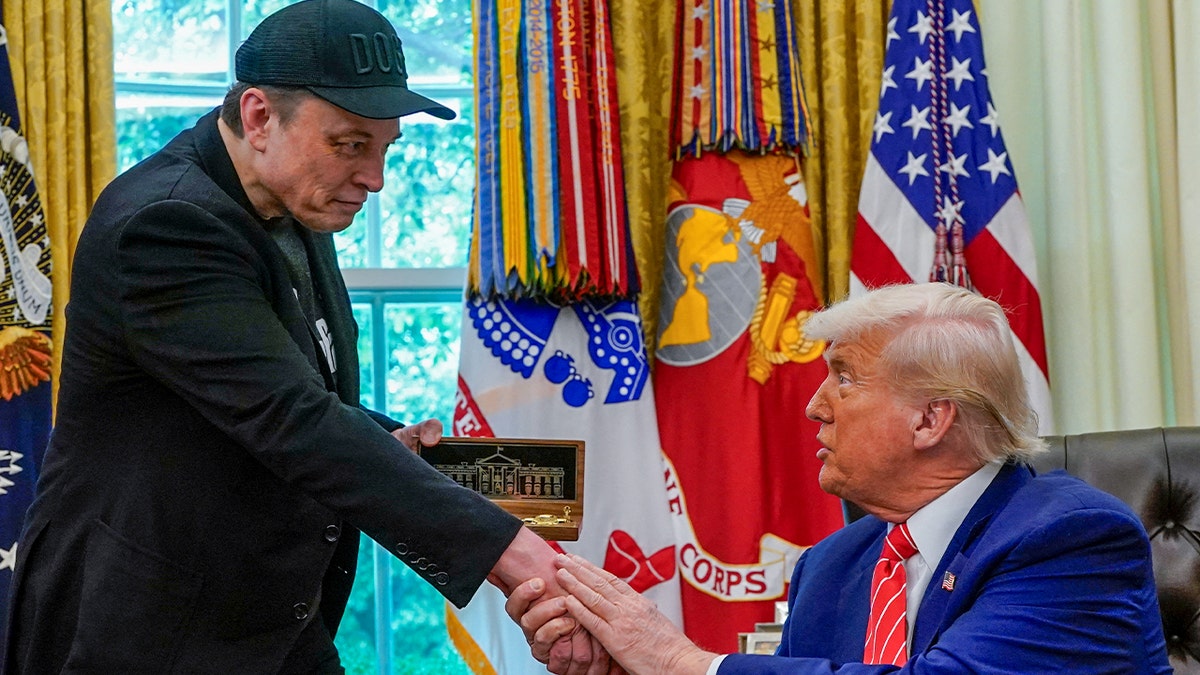
Elon Musk, left, receives a golden key from President Donald Trump in the Oval Office at the White House in Washington, D.C., on May 30, 2025. (Nathan Howard/Reuters)
The White House has said that DOGE leadership following Musk’s departure will continue through members of Trump’s Cabinet.
«The DOGE leaders are each and every member of the president’s Cabinet and the president himself, who is wholeheartedly committed to cutting waste, fraud and abuse from our government,» White House press secretary Karoline Leavitt told reporters Thursday at a White House press briefing.
«The entire Cabinet understands the need to cut government waste, fraud and abuse,» Leavitt said. «And each Cabinet secretary at their respective agencies is committed to that. That’s why they were working hand in hand with Elon Musk. And they’ll continue to work with their respective DOGE employees who have onboarded as political appointees at all of these agencies. So surely the mission of DOGE will continue, and many DOGE employees are now political appointees and employees of our government.»
DOGE STAFFING SHAKEUP AS ELON MUSK HANGS UP HIS HAT, WHITE HOUSE CONFIRMS
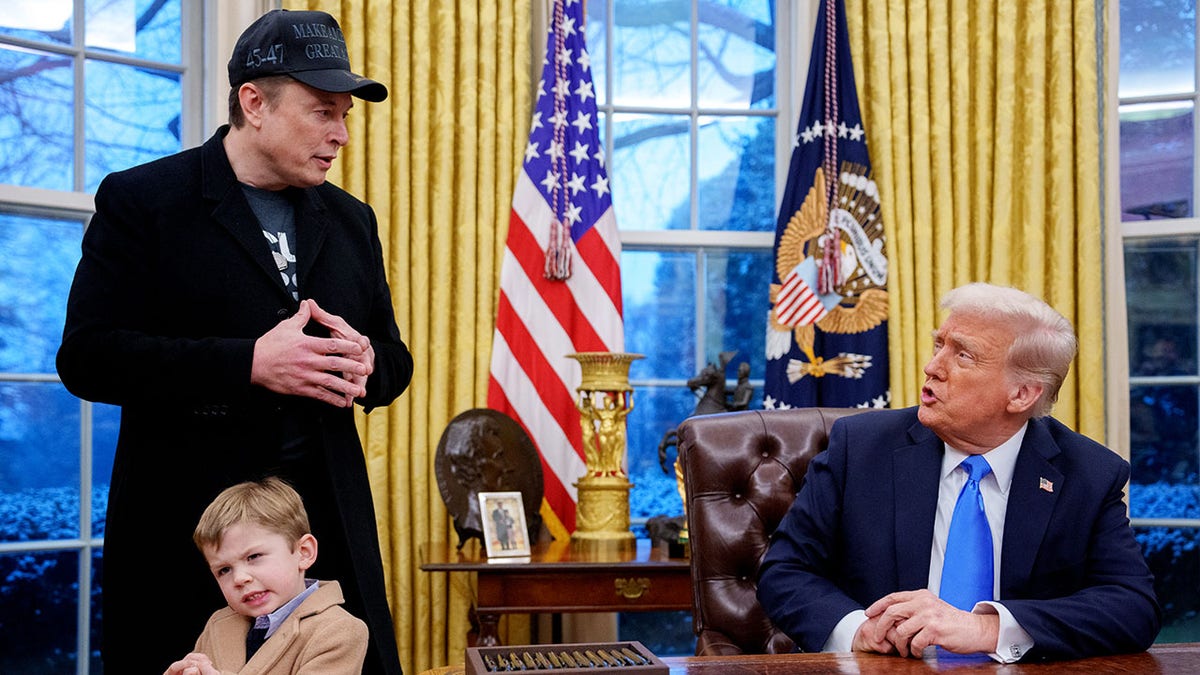
President Donald Trump, right, is joined by Tesla and SpaceX CEO Elon Musk, and his son, X Musk, during an executive order signing in the Oval Office at the White House on Feb. 11, 2025. (Andrew Harnik/Getty Images)
A senior White House official previously told Fox News Digital that DOGE is now part of the «DNA» of the federal government, and that the agency will continue to function as it has done so far.
«The DOGE employees at their respective agency or department will be reporting to and executing the agenda of the president through the leadership of each agency or department head,» the official said.
Fox News’ Andrew Mark Miller contributed to this report.
White House,DOGE,Elon Musk,Donald Trump,Trump’s First 100 Days
-

 DEPORTE2 días ago
DEPORTE2 días agoA qué hora se juega el PSG vs. Inter de Milán por la final de la Champions League
-

 SOCIEDAD3 días ago
SOCIEDAD3 días agoLos famosos reaccionaron a los polémicos dichos de Diego Spagnuolo, titular de la Agencia Nacional de Discapacidad
-

 ECONOMIA3 días ago
ECONOMIA3 días agoCelebra Caputo: dos consultoras midieron la inflación de mayo por abajo del 2%, la menor en 5 años




























